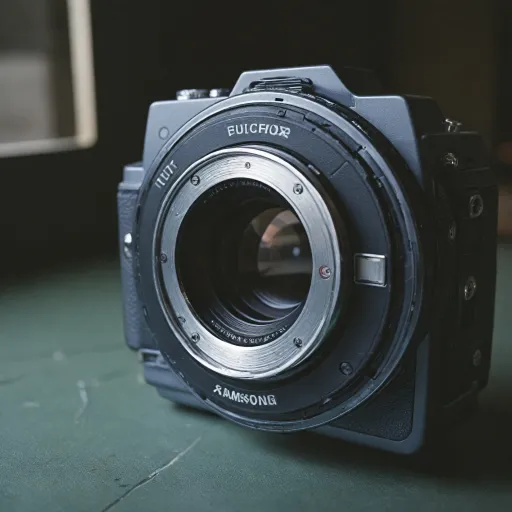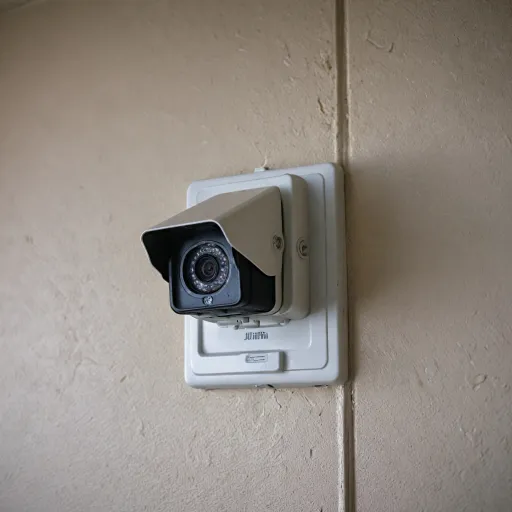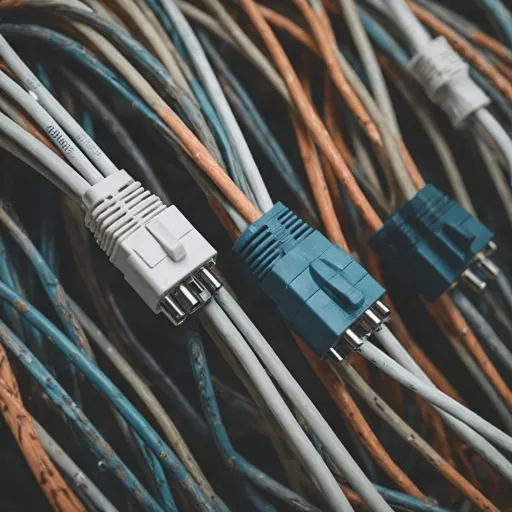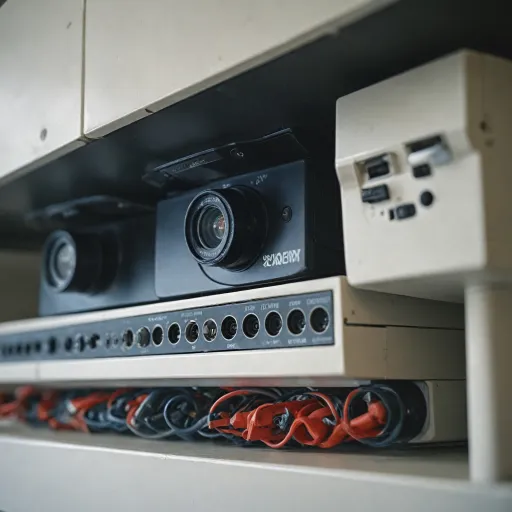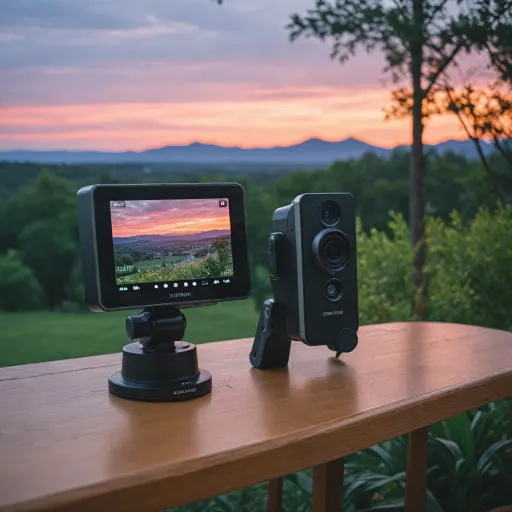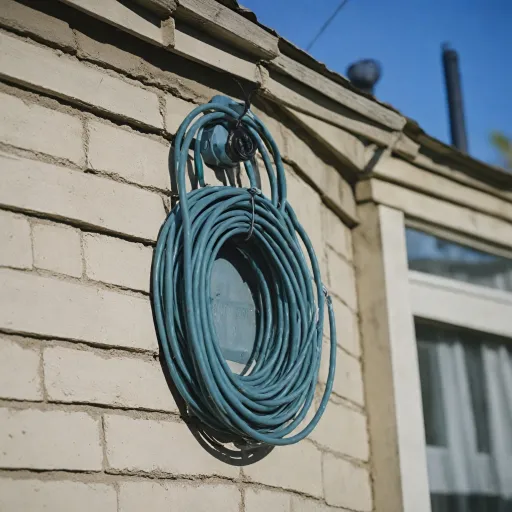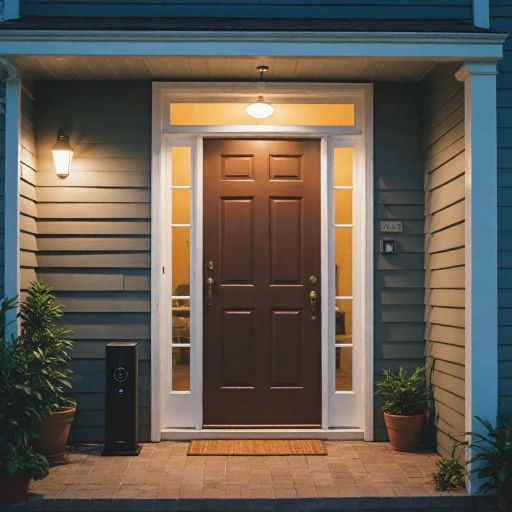
What is a dome camera and how does it work?
How dome cameras capture and transmit video
Dome cameras are a popular choice for security systems in both homes and businesses. Their name comes from the dome-shaped housing that protects the camera lens. This design not only makes them less noticeable but also helps deter tampering. Dome cameras can be found in various styles, including mini dome, turret dome, and hard dome models, each offering unique benefits for different environments.
These cameras work by capturing video through a wide angle lens, which is often adjustable to cover specific areas. Many dome security cameras include features like night vision, allowing them to record clear footage even in low-light conditions. Some models also offer audio recording, adding another layer of security by capturing sound along with video. The camera transmits the footage to a network video recorder (NVR) or directly to a monitoring system, depending on whether it is a wired or wireless setup.
When considering a dome camera, it’s important to understand how it connects to your security system. Many modern dome cameras use power over ethernet (PoE), which means a single cable provides both power and data transmission. This simplifies installation and reduces clutter. For more information on how cords and cables play a role in surveillance cameras, you can read this guide to surveillance camera cords.
- Wired dome cameras are known for stable connections and consistent video quality.
- Wireless dome cameras offer more flexibility in placement but may require regular battery changes or charging.
Compared to bullet cameras and turret cameras, dome cameras are often chosen for their discreet appearance and ability to blend into various settings. They are available at a range of price points, from budget-friendly packs to advanced models with extra features like camera audio and deterrence lights. When comparing regular price and features, it’s useful to consider what your security needs are and how a dome camera fits into your overall camera system.
Key features to look for in a dome camera
Essential Specifications and Capabilities
When evaluating dome cameras for your security system, it’s important to focus on the features that directly impact performance, usability, and value. Dome cameras come in various models, including mini dome, turret dome, and bullet dome, each offering unique benefits. Here are some key aspects to consider:
- Resolution and Night Vision: High-definition dome security cameras provide clearer images, which is crucial for identifying details in security footage. Night vision capabilities allow cameras to capture clear video even in low-light or no-light conditions, making them suitable for round-the-clock monitoring.
- Wide Angle Coverage: Many dome cameras are designed with wide-angle lenses, enabling them to monitor larger areas compared to some bullet cameras. This is especially useful for open spaces or areas requiring broad surveillance.
- Audio Integration: Some dome cameras offer built-in audio, allowing you to listen in or communicate through the camera. This feature can enhance deterrence and provide additional evidence if incidents occur. Always check if the camera audio is included in the regular price or if it’s an add-on.
- Power Options: Dome cameras can be powered in several ways, including traditional wired connections or Power over Ethernet (PoE). PoE simplifies installation by delivering both power and data through a single cable. For more on powering your camera, see this guide on understanding the power supply for your security camera.
- Wired vs. Wireless: Wired dome cameras, often connected to an NVR (network video recorder), are generally more reliable and less susceptible to interference than wireless models. However, wireless options can offer easier installation and flexibility.
- Deterrence Features: Some dome cameras include visible deterrents like white LED lights or warning stickers. The dome shape itself can make it hard for intruders to tell which direction the camera is facing, increasing its effectiveness as a deterrent.
- Durability and Weather Resistance: Look for hard dome cameras with vandal-resistant and weatherproof ratings, especially if you plan to install them outdoors. This ensures longevity and consistent performance in various environments.
- Expandability and Compatibility: Consider whether the camera can be easily added to your existing security system or if it supports multi-channel setups. Some dome cameras are sold in packs, making it easier to cover multiple areas at a regular price.
By focusing on these features, you can better compare dome cameras to other types like bullet cameras or turret models, and choose the right fit for your security needs. Always balance price, performance, and the specific requirements of your property when making a decision.
Advantages of using dome cameras for security
Why dome cameras stand out for security
Dome cameras have become a popular choice for both home and business security systems. Their unique design and features offer several advantages over other types of security cameras, like bullet or turret dome models. Here’s what makes dome cameras a strong option for your security needs:
- Discreet appearance: The dome shape blends well with most environments, making the camera less noticeable. This can help with deterrence, as potential intruders may not easily spot the camera or determine its viewing direction.
- Wide angle coverage: Many dome cameras are designed with a wide angle lens, allowing them to monitor larger areas compared to some bullet cameras. This means fewer cameras may be needed to cover the same space, which can help with the overall price of your security system.
- Vandal resistance: The hard, protective dome casing offers extra protection against tampering or vandalism. This is especially important for outdoor or public-facing installations.
- Versatile mounting: Dome cameras can be installed on ceilings or walls, providing flexibility for different security system layouts. This makes them suitable for both indoor and outdoor use.
- Night vision capabilities: Most modern dome security cameras include infrared night vision, ensuring clear footage even in low-light conditions. This is essential for 24/7 monitoring.
- Audio integration: Some dome cameras offer camera audio features, allowing you to listen in or communicate through the camera channel. This can add another layer of security, especially in entryways or reception areas.
- Wired and Power over Ethernet (PoE) options: Dome cameras are available in both wired and wireless models. Wired dome cameras, especially those using power ethernet (PoE), provide reliable power and data transmission. This is ideal for larger camera systems or when you want to avoid battery maintenance. For more on the importance of reliable cabling, check out this guide to security camera cables.
- Integration with NVR systems: Dome cameras can be easily added to network video recorder (NVR) setups, making it simple to expand your security system as needed. Many brands offer multi-camera packs at a regular price, making it cost-effective to scale up.
When comparing dome cameras to other types like bullet or turret dome cameras, consider your specific needs for deterrence, coverage, and installation flexibility. Dome cameras are a reliable, versatile choice for both residential and commercial security systems.
Common challenges with dome cameras
Potential Drawbacks and Limitations
While dome cameras offer strong security features and a discreet look, they are not without challenges. Understanding these limitations can help you make an informed decision when adding cameras to your security system.
- Vandal Resistance Isn’t Absolute: Many dome cameras are marketed as vandal-resistant, but determined tampering is still possible. The dome cover can be scratched or cracked, especially if the camera is installed within easy reach.
- Cleaning and Maintenance: The clear dome cover can attract dust, fingerprints, and water spots, which may affect image quality. Regular cleaning is needed to maintain clear footage, especially for outdoor models exposed to the elements.
- Infrared Reflection Issues: Some dome cameras with night vision may experience IR reflection problems. If the dome is dirty or scratched, infrared light can bounce back into the lens, causing glare or reduced clarity in low-light conditions.
- Installation Complexity: Compared to bullet cameras, installing a dome camera can be more challenging. Proper alignment is crucial, and accessing the camera’s internal components for adjustments or wiring can be tricky, especially with mini dome or turret dome models.
- Audio Limitations: Not all dome cameras come with built-in audio. If camera audio is important for your security needs, check the specifications before purchasing. Adding audio may increase the regular price or require a different channel or nvr system.
- Field of View Constraints: While many dome cameras offer a wide angle, some models have a more limited range compared to bullet cameras. This can affect coverage, especially in large open areas where a single camera system is expected to monitor a wide space.
- Power and Connectivity: Wired dome cameras often require power over ethernet (PoE) or separate power cables. This can complicate installation, particularly if you’re adding cameras to an existing security system that wasn’t designed for PoE.
- Price Considerations: Dome cameras with advanced features like audio, night vision, or vandal resistance can have a higher regular price compared to basic bullet cameras. Weighing the price add for these features against your security needs is important.
Despite these challenges, dome security cameras remain a popular choice for both home and business security. Being aware of these potential issues can help you select the right camera, whether you’re considering a hard dome, turret, or mini dome model for your security cameras pack.
Comparing dome cameras to other security camera types
How dome cameras stack up against other security camera types
When choosing a security system, it’s important to compare dome cameras with other popular options like bullet cameras, turret dome cameras, and mini dome models. Each type offers unique benefits and challenges, so understanding these differences can help you select the best fit for your needs.- Design and Deterrence: Dome cameras are known for their discreet, low-profile design. This makes them less noticeable than bullet cameras, which are more visible and can act as a stronger deterrent. However, the subtle look of a dome camera can be an advantage in settings where you want security without drawing attention.
- Installation Flexibility: Dome cameras are versatile and can be mounted on ceilings or walls. Bullet cameras, on the other hand, are often easier to adjust for specific viewing angles. Turret dome cameras offer a blend of both, with flexible positioning and a compact shape.
- Weather Resistance: For outdoor security, bullet cameras and turret domes often have robust weatherproof ratings. Many dome cameras are also weather-resistant, but it’s important to check the specifications, especially if you need a camera for harsh environments.
- Image Quality and Night Vision: Both dome and bullet cameras can offer high-definition video, wide angle views, and strong night vision. Mini dome cameras are great for smaller spaces but may have a narrower field of view compared to larger models.
- Audio and Power Options: Modern dome security cameras often include camera audio features and can be powered via Ethernet (PoE), just like many bullet cameras. When building a camera system, consider whether you need audio recording and how you’ll supply power—wired or wireless options are available for most types.
- Price and Value: The regular price of dome cameras is generally comparable to bullet cameras, though features like audio, NVR compatibility, and wide angle lenses can affect the price. Some brands offer free packs or bundles, which can add value to your security system.
| Camera Type | Best For | Deterrence | Installation | Audio | Price Range |
|---|---|---|---|---|---|
| Dome | Discreet indoor/outdoor use | Moderate | Ceiling/Wall | Available | Regular price |
| Bullet | Visible deterrence, outdoor | High | Wall | Available | Regular price |
| Turret Dome | Flexible positioning | Moderate | Ceiling/Wall | Available | Varies |
| Mini Dome | Small spaces | Low | Ceiling | Limited | Lower |
Tips for installing and maintaining your dome camera
Getting the Most from Your Dome Security Camera Setup
Proper installation and regular maintenance are key to maximizing the performance and lifespan of your dome cameras. Whether you’re adding a single mini dome to your home or setting up a full security system with multiple cameras, a few practical steps can help you avoid common pitfalls and get reliable results.- Choose the right location: Dome cameras offer a wide angle view, making them ideal for monitoring large areas. Install your camera at a height that deters tampering and covers key entry points. Avoid placing cameras directly facing strong light sources to prevent glare and ensure clear night vision.
- Secure mounting: Use the correct mounting hardware for your surface, whether it’s drywall, concrete, or wood. A hard mount helps prevent vibrations that can affect image quality. For outdoor cameras, ensure the dome is weatherproof and the seal is intact to keep out moisture and dust.
- Power and connectivity: Wired dome cameras often use power over ethernet (PoE), which simplifies installation by delivering both power and data through a single cable. If you’re using an NVR (network video recorder) system, check compatibility and channel capacity before adding more cameras. For wireless setups, ensure your Wi-Fi signal is strong at the camera’s location.
- Audio and deterrence features: Some dome security cameras include audio recording or two-way talk. Test these features after installation to confirm they work as expected. Visible cameras, especially in white or with a turret dome design, can act as a deterrence to potential intruders.
- Regular cleaning and inspection: Over time, dust and debris can accumulate on the dome, affecting image clarity. Gently clean the dome cover with a soft, damp cloth. Inspect for cracks or discoloration, especially if your camera is exposed to harsh weather.
- Software updates and system checks: Keep your camera system’s firmware up to date for security and performance improvements. Regularly review your camera’s footage and settings to ensure everything is working as intended. If you have a pack of cameras, check each one individually.




